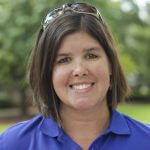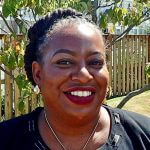Kristin Reilly
Annapolis, Maryland
As Director of the Choose Clean Water Coalition, Kristin strategically advances the Coalition’s work to restore and protect local rivers, streams, and the Chesapeake Bay by leading the coordination of more than 230 member organizations across the watershed. By working to create a collective voice for the watershed, Kristin helps to build the communications and advocacy capacity of Coalition members to create change. Kristin joined the Choose Clean Water Coalition in 2016, previously serving as the Coalition’s Communications Director. Kristin comes to the Coalition from Oceana, where she worked on their digital communications, advocacy, and marketing strategy. Kristin earned her master’s degree in Public Communications from American University in 2013, focusing her studies on social marketing and behavior change. She received her bachelor’s degree in Geography and Political Science from Miami University, with a focus on environmental studies.
This interview was conducted by Carly Schmidt on August 20, 2019. Learn more about Kristin’s work at the Choose Clean Water Coalition.
How did your career at the Choose Clean Water Coalition begin and what is your role in the organization?
I started as the Communications Manager 3 years ago, in October of 2016. At the time, the coalition was a team of 3 staff. Before coming to the coalition, I was working for the EPA, at the Chesapeake Bay program office, right out of school. Coming to the coalition was interesting because the challenge was learning to communicate with over 230 member organizations and really identify ways that our communications can support the work of our members, provide tools to make members’ work successful, and elevate the great things that we were doing. This work evolved into creating strategic campaigns that focus on collaborating with members. I jumped at the chance to apply for the director position and I have been in this new role for almost 2 months.
How did your personal journey to conservation begin?
My family would say that it runs in the family. My grandfather was one of the first people to work for the newly-established EPA in the early ‘70s and helped write the Clean Water Act. The environment was always prioritized in my family, but not always overtly. I really cared about wildlife and water in school – that’s how it became part of the work that I did. When I went to college, I wanted to work for the EPA and affect change. After graduating with a degree in Geography and Political Science, I was connected with someone at the EPA who told me about a 3-year job training program for recent college grads. This was 2009, and it turned out to be a really interesting time to join the EPA. Obama had issued an executive order for the Chesapeake and the Chesapeake Bay Total Maximum Daily Load (TMDL) was being developed at the EPA. I got to see behind-the-scenes of this process, with everyone figuring out next steps. It is so interesting to see the progress that has been made 10 years later.
Do you think a lot of progress has been made, or not enough?
Working on the communications side of the environment, you always hear the bad stuff, like dead zones in the Chesapeake, fish populations depleting, etc. The reality is, despite record rainfall, the Bay is now resilient. Underwater grasses have increased, which are critical for wildlife. We are also hearing that crab populations are really high, reaching record numbers. These are great indicators of progress. It is so important to focus on the progress we are making, despite setbacks. It is nice for folks to hear that we are seeing change and our restoration efforts are working.
You seem to really value sticking to the positive. How do you think this has impacted member groups across the coalition?
Ultimately, the coalition is about every river and stream that flows into the Chesapeake. It all needs to be clean. Coalition members are seeing drastic changes in their own localities. The James River in Virginia, for example, is seeing incredible numbers of trout, bass, and oysters. It is very interesting to see the change happening on the local level and we are seeing our positive messaging trickling down as well.
The Choose Clean Water Coalition is a relatively new partnership. What did this organization do particularly well in getting off the ground as a regional coalition?
The coalition came together in 2009, so we just celebrated 10 years. It coincided with the Chesapeake Bay TMDL and the need for the nonprofit community to work collaboratively and speak with one voice. In the Chesapeake Bay, we have regional organizations with tons of staff and capacity, but we also have small, volunteer-based organizations. The coalition was formed to make sure that we are on the same page in terms of our asks, goals, and how we can move restoration forward to meet goals. We provide a space and capacity for members to participate, no matter the size and scope of the organization.
The key to getting off the ground was making a strong case for why this group was necessary and demonstrating what we would do to elevate voices. The coalition worked to get buy-in from the communities we serve, and we did this by creating a steering committee of 19 organizations with national, local, and regional watershed groups that would represent our greater membership. It is important for coalitions to be at the service of their members. We create our priorities based on our members’ needs. Creating this level of trust is so important and is part of the reason we’ve been successful.
What are you most eager to learn, being a part of River Network?
River Network and the Choose Clean Water Coalition overlap in many of our objectives. Brenna Goggin was previously a member of our steering committee. I am looking forward to collaborating with River Network and finding ways to work together.
You were recently promoted to Coalition Director, congrats! What kind of impact would you like to see your organization make in your community over the next 10 years?
One of the big priorities of our coalition is to ensure that our movement, specifically in the Chesapeake, is inclusive of every community and every person impacted, which is everyone! The environmental movement, in the past few years, has tried to be more diverse, inclusive, and equitable, and this is something that we focus on through our own equity work group and working with funders. For a long time, the environmental movement was in the habit of parachuting into communities and telling them what they need, but this is not how to engage communities in a meaningful way. Over the next 10 years, the coalition will focus on engaging with all communities in an authentic way to affect positive change.







